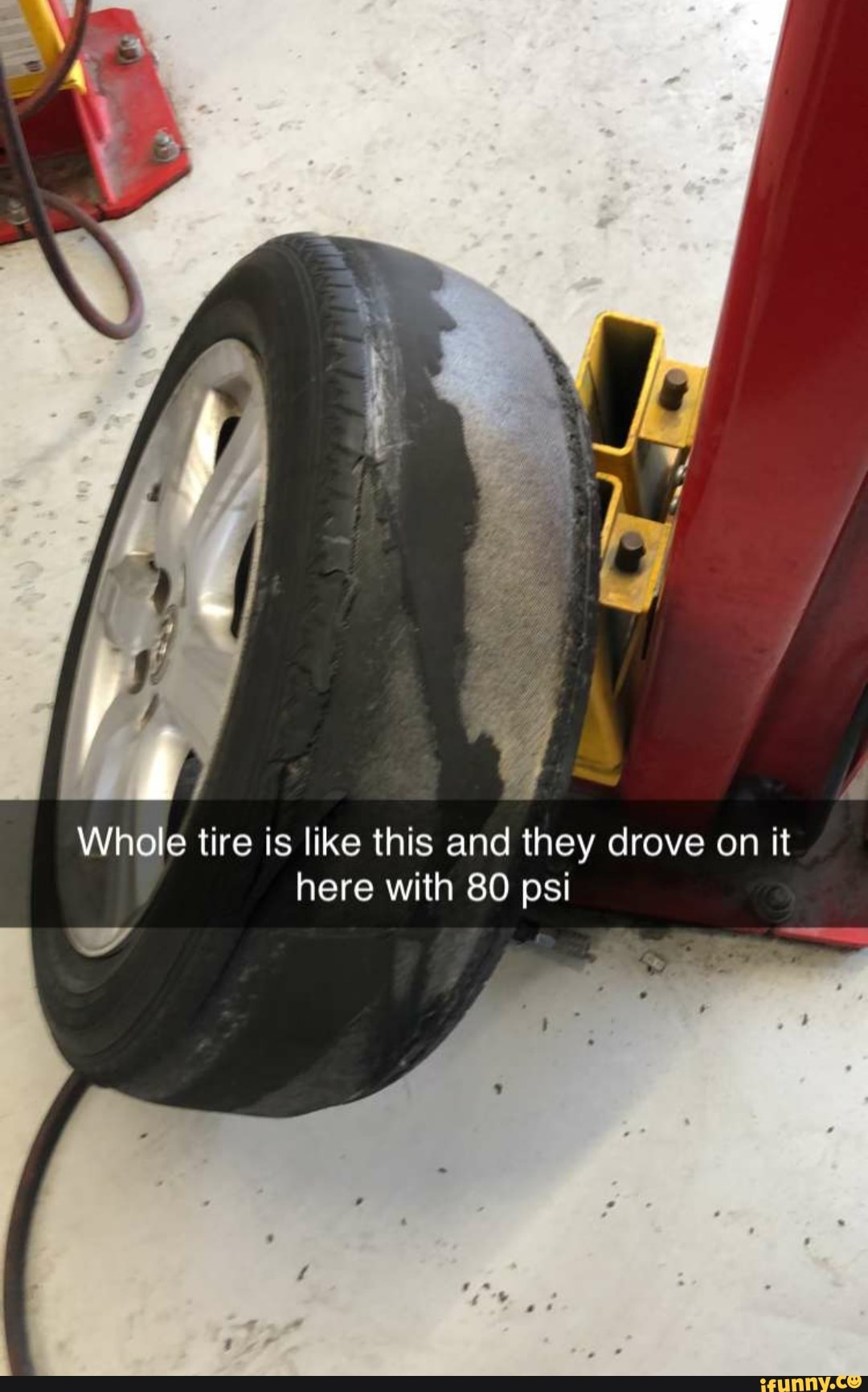

The physical properties of nitrogen reduce the pressure loss due to the natural permeability of the materials of the tire. It is simply dry air with the oxygen removed (air contains nearly 79% Nitrogen).
#Spare tire psi free#
(If you can’t find the manual, or you still have questions, feel free to ask a trained Jiffy Lube ® technician).
#Spare tire psi manual#
Check your owner’s manual or inspect the spare for more information on how frequently you should replace it. Replacement will depend on the type of spare you have.They also don’t have advanced treads so they can’t provide the proper traction that regular tires would. Braking early and with extra distance between you and other vehicles can ensure you’re not in for surprises, especially during inclement weather since spares are more susceptible to slipping or hydroplaning.Plus, a donut spare can lead to inaccuracies in some vehicles’ speedometers. Using a spare can cause your vehicle’s Anti-lock Brake System (ABS) light to illuminate or your ABS to malfunction.Give yourself extra space and time to brake. Check the tire pressure regularly when it isn’t in use.Ģ. Driving safely is extremely important for both donuts and full-sized spares.ġ.
#Spare tire psi how to#
Now that we know “how long can you drive on a spare tire?”, let’s go over how to make those miles last.

#Spare tire psi full#
Larger vehicles often come equipped with a full-sized spare, which are larger to support the full load and any additional cargo or items being towed.They not only differ from regular tires in shape and size, but also in required tire pressure (for a smaller vehicle it’s usually 35 PSI, but donuts are around 60 PSI).Usually fit inside your car, beneath the floor of the trunk.These spares are often compact donut tires.Let’s Talk About Different Spares For Different Needs. Here’s the scoop on why: Their design has far less traction and durability than a standard tire, so keep those mph low or you’ll have a very harsh ride. Spares are not meant to replace a tire and are exactly as they sound – temporary. You shouldn’t drive more than 50 miles on a temporary tire, if possible, and you shouldn’t drive more than 50 mph either. So, once you’re able to get the spare on, you’ve bought yourself a bit more time, but how much?Īfter you’ve replaced your flat tire with the spare, it’s easy to wonder: how long can you drive on a spare tire? Remember the rule of 50. So, the answer to, “can I drive on a flat tire” is mostly no.Īn exception to this is if the damaged tire is a “run flat tire”, which are tires that are built to drive on zero tire pressure for a short distance in the event of a flat. You don’t want to drive on a flat too long or you could damage the tire and even the rim, leading to even more costly repairs. Only drive as far as you must until it’s safe to pull off the road. You May Be Wondering, “Can I Drive On A Flat Tire?” Whether it’s low tire pressure or you just found a nail stuck in it, you know the repair is going to cost you time and money.

Oh, the frustrations that come with a flat tire.


 0 kommentar(er)
0 kommentar(er)
